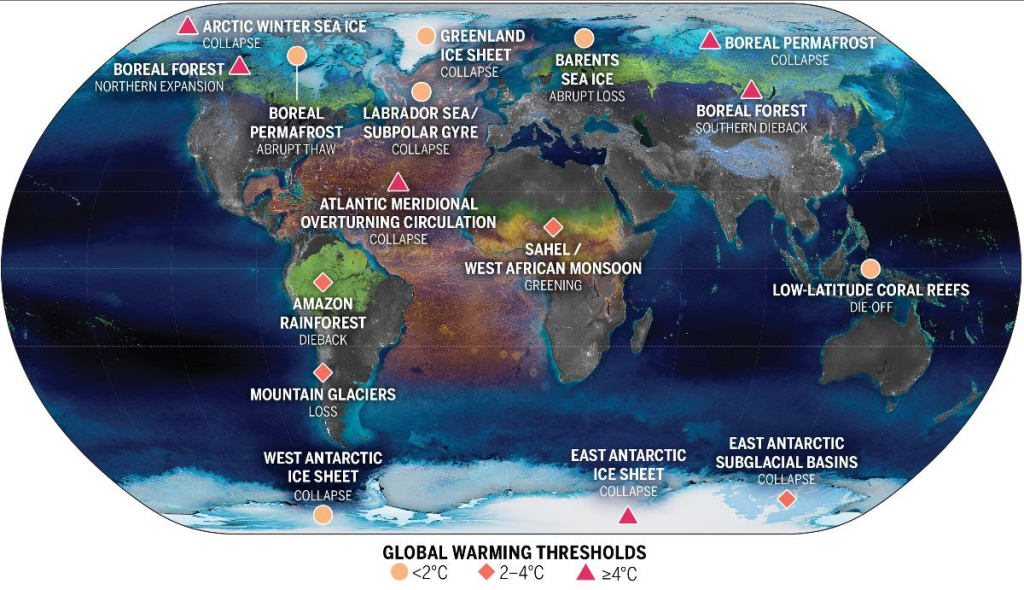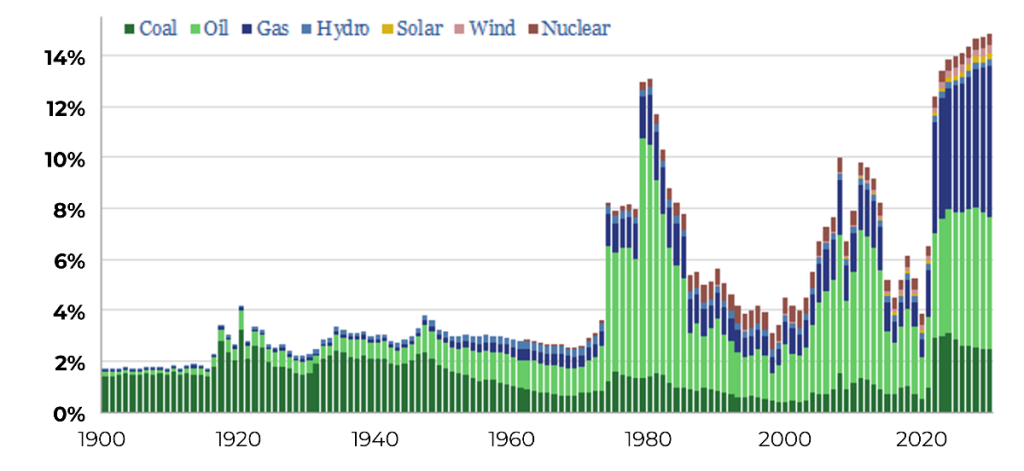Final Thoughts on 2022

A colleague of mine recently turned me onto an excellent podcast called Revolutions by Mike Duncan and I decided to start with the French Revolution.
As I worked my way through the 55-part, bazillion-hour-long story, I started to recognize parallels with what we’re seeing today with energy and climate that left me unsettled.
For those that slept through grade 12 social class, here’s the French Revolution in a minute:
The French Revolution is essentially about replacing an ancient system with a modern one. In the late 1700s, the regular everyday folk of France woke up to the fact that they were living in conditions under a monarchy that just couldn’t be continued. The aristocracy and poor hapless King Louis XVI watched as a movement took over every aspect of French society.
- There was some initial push back on change: a small faction of monarchists and nobles believed there was nothing wrong with the old system and resisted change, but resistance was futile. Change was coming.
France was then consumed by idealistic mobs who silenced the more moderate and pragmatic voices of the revolution through intimidation and then conducted a kangaroo court of justice causing many, including poor hapless King Louis XVI, to lose their head to the guillotine.
To be fair to the mob, they were trying to tear down an ancient system and replace it with a democratic and freer one, something many of us still benefit from today.
- As we say in management consulting, the mob was “directionally correct”, though its rule is heavily scrutinized and was coined The Reign of Terror.
… mistakes were made.

Parallels with today: Today, we’re also trying to replace an ancient system. We’ve woken up to the fact that we’re living in conditions that shouldn’t be continued (driving to Safeway to get some milk shouldn’t contribute to a third of Pakistan being underwater every few years). We are now witnessing climate change and sustainability creep into many aspects of our society.
- We even have our own set of nobles stuck thinking there’s nothing wrong with the old system. Check out Friends of Science who still claim, “CO2 is no more a pollutant than water”.
And unfortunately, it feels like there are mobs that work to silence the more moderate and pragmatic voices in the energy and climate discussion (in 2022, we call it “cancelling”). These include both climate mobs, who will cherry pick snippets from IEA reports to justify gluing themselves to Van Gough paintings, and anti-ESG mobs who are hostile to any sort of change whatsoever.
The stakes of getting this wrong are high
On the climate front, obviously there’s a lot to be concerned about. Probably the biggest danger we face are the unknown risks of climate tipping points. These are points at which the climate system itself becomes self-perpetuating, with ten key climate tipping points to be aware of.
Climate tipping points around the world

While these are unlikely to recreate the scenes from Day After Tomorrow with Dennis Quaid sledding across New York City which is suddenly buried beneath 100 feet of snow to find Jake Gyllenhaal, they are risks because exactly when they tip over is unknown, and their impacts could be and are likely significant.
There are energy tipping points, too
Tipping points in energy are less discussed but no less real. A real-world example took place in Lebanon late last year, a story we criminally under-discussed this year.
In a nutshell: Lebanon was already experiencing economic hardship when there was a sudden diesel shortage. Not no diesel, just not enough diesel to meet demand.
Panic buying of diesel fuel exacerbated the shortages resulting in rolling blackouts from the diesel power stations across the country, which led to refrigeration shortages, which led to a food crisis. The whole thing left 80 percent of the population living below the poverty line and more than half of the country living on only two meals a day.

It’s truly a heartbreaking situation and a warning of what can happen if we manage our energy systems wrong.
Navigating an energy transition is a tight rope
If we move too slow, we risk a climate tipping point, yet if we mishandle meeting energy needs with supplies, we risk an energy tipping point.
What we need: Pragmatism.
We are building the energy system of the future, which is an incredibly complicated engineering problem by itself. Making it much more challenging is the tit-for-tat politics of energy and climate change that views giving an inch of compromise as a total political loss.
Earlier this week, the US Senate voted down a key bill which would have sped up the permitting of new infrastructure projects. Without it, many believe it will be all but impossible to reach President Biden’s target of reducing US net carbon emissions 50 percent by the end of the decade. Strangely, it was the left-wing of the Democrats who helped vote it down, as they were angered that it allowed West Virginia to build a gas pipeline.
Avoiding a major country-wide emissions goal over a gas pipeline is cutting off your nose to spite your face.
Energy shortages: A favorite analyst of mine, Thunder Said Energy (TSE), put out a great chart earlier this year highlighting the global energy problem: we’re short energy.
Global spending on primary energy
percent of global GDP

According to TSE, we’ve underinvested in energy by an estimate $600 billion since 2015, leaving us about 2 percent energy short globally, even before Russia invaded Ukraine. We now spend close to 14 percent of our global incomes just to pay for energy, up 3.5x from just two years ago.
Governments are having to pay hundreds of billions of dollars to their citizens to help them financially weather the energy crisis, money which could have instead gone towards green initiatives.
That’s the cost of getting the energy balance wrong.
Pragmatism also means being honest with where we’re at
There is a lot of public pressure on governments and financial institutions to invest as though we’re on track with the IEA’s Net Zero by 2050 scenario. The reality is that we’re probably not.
- On a recent Energy vs Climate podcast, Chief Economist of the IEA Tim Gould admitted we’re likely not even on track for the IEA’s Announced Pledges scenario.
If underinvesting $600 billion since 2015 is leading today’s crisis, underinvesting as though we’re on track with the Net Zero by 2050 scenario and we’re not will make today’s problems worse.
But it’s not all bad: As I said earlier, the energy transition is a massive engineering problem. The good news is that there are hoards of engineers now working on solutions.
We’re based out of the oil town of Calgary, a city that outsiders often negatively stereotype as “a bunch of cowboy climate deniers”. That couldn’t be further from the truth (ok, there’s some truth to the cowboy part).
Everywhere you go, there are engineers, scientists, and entrepreneurs all working on new types of clean technologies and novel ideas to reduce emissions in many different industries and sectors.
- To support them, corporations and financial institutions are increasingly setting up energy transition funds to help advance technologies and rollout.
We are moving past the time of the climate activist and heading into the time of the climate engineer. The climate activists were “directionally correct”, and now the machine-like minds of engineers are working from the bottom up building the energy system of the future.
Bottom line: While it takes time for ideas to manifest as emissions reductions, having thousands of bright engineering minds working on solutions is an excellent leading indicator that the emissions reductions are on their way.
With that said, we all hope that everyone has a great holiday, and we’ll see you in the new year.




